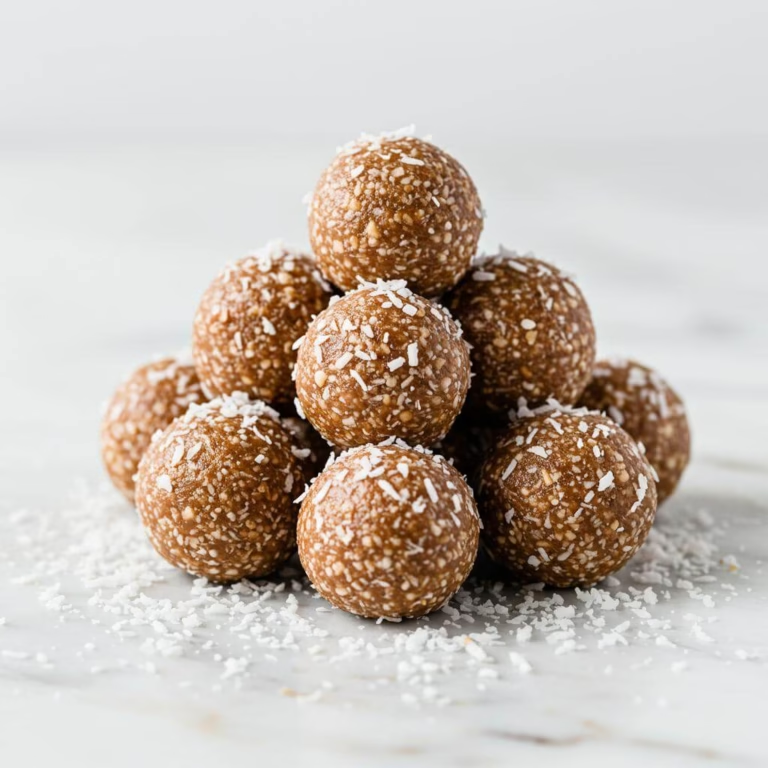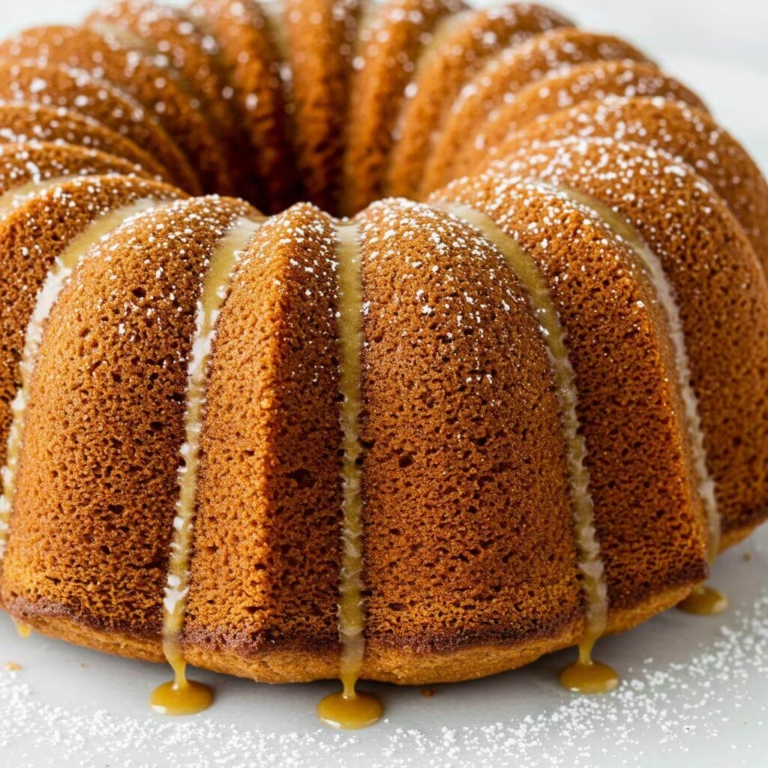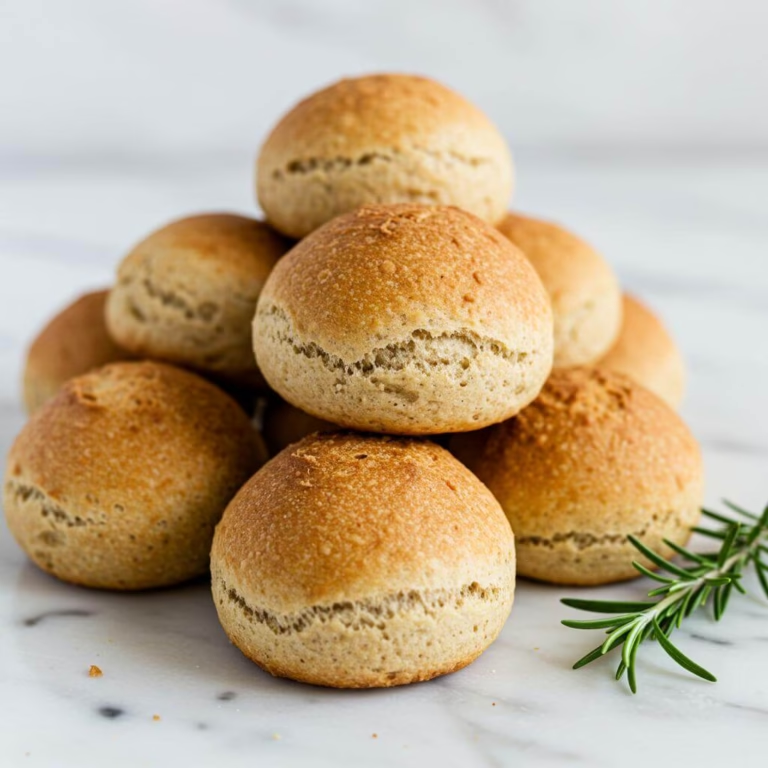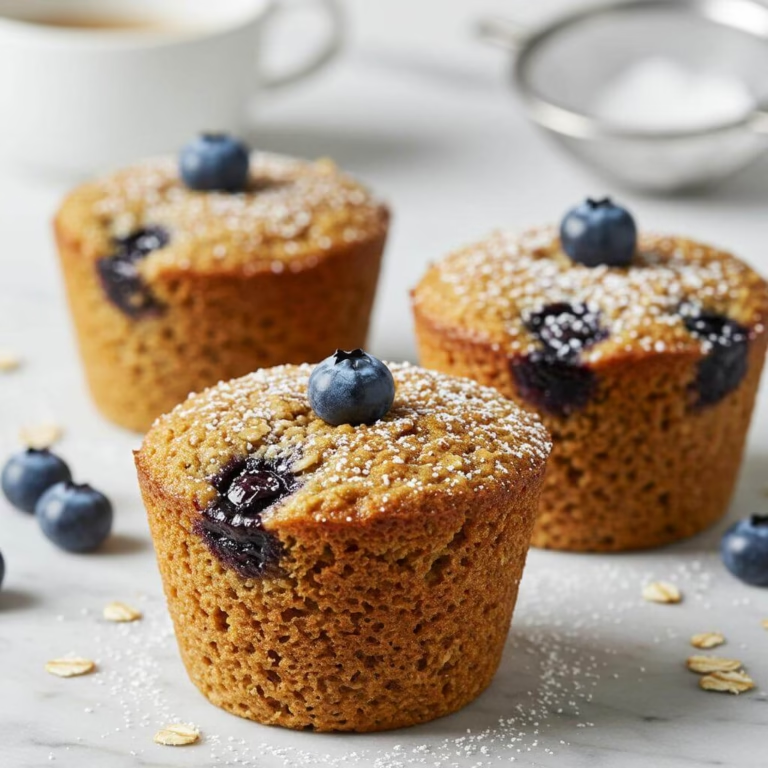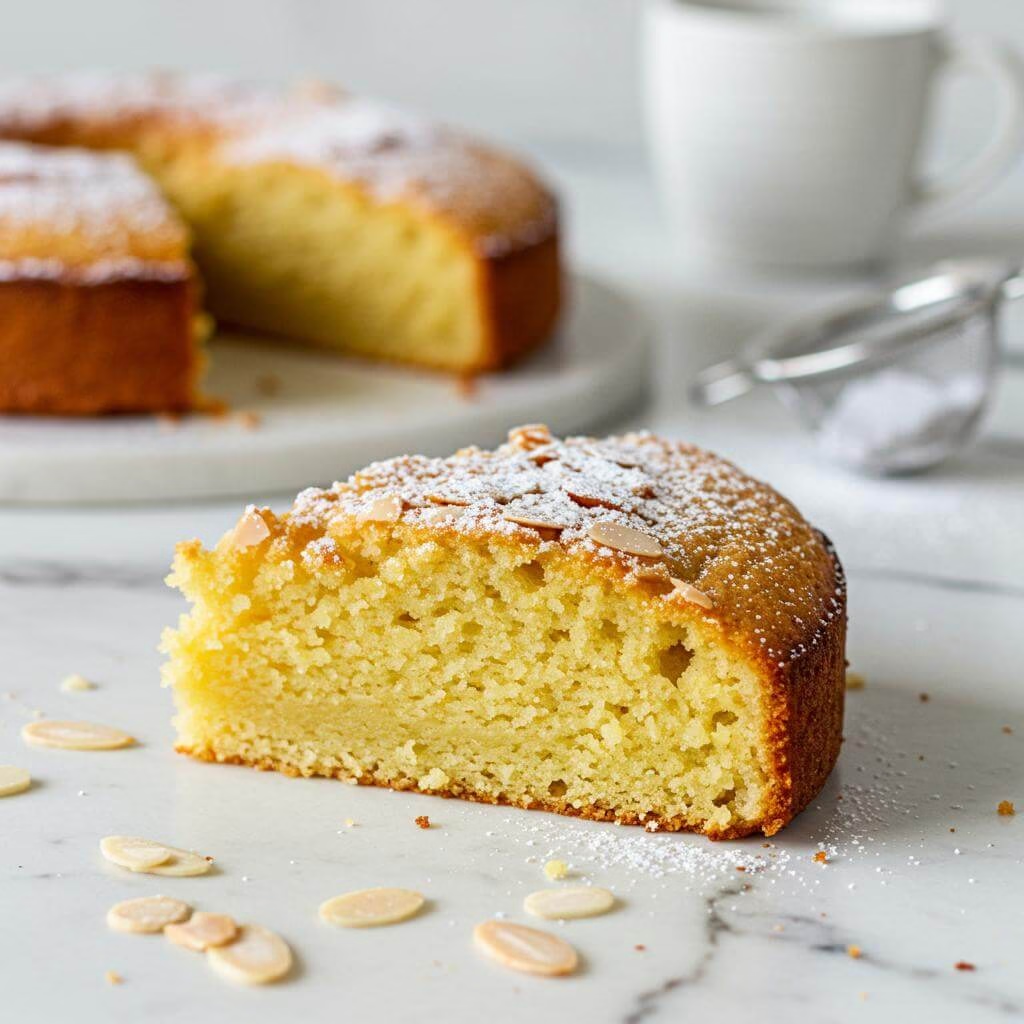
The Secret’s Out: This Potato Almond Cake is Your New Gluten-Free Obsession!
Hello, delightful food explorers and fellow gluten-free enthusiasts! Are you ready to uncover a baking gem that will redefine what you thought was possible with gluten-free cakes? Prepare to be utterly charmed by our incredible Potato Almond Cake. Yes, you heard that right – potato! This might seem like an unexpected twist, but believe us when we say this humble root vegetable is the key to unlocking one of the most surprisingly moist, tender, and flavorful cakes you’ll ever have the pleasure of baking and eating. It’s a potato almond cake recipe that’s about to become a cherished favourite in your gluten-free kitchen.
Navigating the world of gluten-free baking can sometimes feel like a quest for that perfect texture – that elusive moist crumb that doesn’t crumble at first sight. Well, quest no more! This potato almond cake is a triumphant discovery. The cooked, mashed potato isn’t just a filler; it’s a miracle worker, infusing the cake with an unparalleled moistness and a delicate, soft crumb that stays delightful for days. Paired with the rich, nutty depth of ground almonds, which provide beautiful structure and flavour, and a bright whisper of lemon, this cake is a symphony of simple, wholesome ingredients. If you’re a fan of bakes that master moisture without gluten, you’ll also adore our Moist Gluten-Free Banana Bread.
What makes this potato almond cake truly special for us here at Be Gluten Free? It’s the beautiful simplicity and the sheer joy it brings. Forget complicated gluten-free flour blends or hard-to-find ingredients for this one! This recipe celebrates the power of whole foods to create something truly spectacular. The ground almonds step in for traditional flour, offering a lovely flavour and keeping it naturally gluten-free and wonderfully satisfying. It’s a fantastic way to add a wonderfully textured and wholesome cake to your repertoire, much like how our Flourless Chocolate Fudge Cake delivers rich indulgence without a speck of flour. And if you’re looking for more straightforward gluten-free baking wins, our easy gluten-free muffins are always a hit! This potato almond cake is proof that gluten-free baking can be straightforward, utterly delicious, and a joy to share. Get ready to bake a cake that will have everyone asking for the recipe – and be amazed when you reveal the secret ingredient!
Why This Potato Almond Cake Recipe is an Absolute Triumph
Let’s talk about the magic behind this incredible potato almond cake. Baking delicious, perfectly textured gluten-free cakes can sometimes feel like searching for a culinary unicorn. Many recipes rely on complex flour blends or heaps of binders to compensate for the lack of gluten, often resulting in textures that are either dense, crumbly, or just… a bit ‘off’. But this particular potato almond cake recipe? It’s a masterpiece of simplicity and function, naturally achieving a moist, tender crumb that will make you forget all about wheat.
So, what are the secrets to the success of this delightful potato almond cake?
The Powerhouse Duo: Almonds and Mashed Potato
The brilliance of this recipe lies in its star ingredients: ground almonds and cold mashed potato. Instead of trying to replicate gluten’s elastic network with a mix of rice flour, tapioca starch, and xanthan gum, this recipe utilizes the inherent properties of these two humble ingredients to build structure and ensure moisture.
Ground Almonds: Structure and Richness
Ground almonds (or almond flour) are a fantastic gluten-free base. They bring a wonderful richness and nutty flavor, of course, but they also contribute significantly to the cake’s structure. Almonds contain protein and fat, which help to create a tender crumb while providing *some* structural support. Unlike gluten, which forms an elastic network trapping air and providing chewiness, almond protein contributes a more delicate, crumbly (in a good way!) structure. This works perfectly in a cake where tenderness is key.
Mashed Potato: The Unexpected Binder and Moisturizer
This is where this potato almond cake truly shines. Using mashed potato might seem unconventional, but it’s pure genius in gluten-free baking. Mashed potato is packed with starch granules. As the cake bakes in the heat of the oven, these starch granules absorb moisture from the batter and gelatinize. Think of it like setting Jell-O, but on a microscopic level within the cake matrix. This gelatinization helps to bind the ingredients together, providing structure and preventing the cake from becoming dry or crumbly – a common pitfall in gluten-free baking.
Furthermore, mashed potato adds significant moisture. This acts as an internal moisturizer, keeping the cake soft and tender long after it’s baked. The tip about using a potato ricer is crucial here! Ricing the potato ensures a smooth, lump-free texture, allowing the potato to integrate seamlessly into the batter without creating dense pockets. This fine texture contributes to the overall light and fluffy result of the potato almond cake.
The Supporting Cast: Fat, Sugar, and Eggs
While almonds and potato lay the foundation, the other classic cake ingredients play vital roles:
- Butter and Sugar: The initial creaming of butter and sugar incorporates air, which is essential for leavening, especially in gluten-free baking where there’s no gluten network to hold onto air bubbles. They also contribute tenderness and moisture.
- Eggs: Eggs are powerful binders and add richness. The protein in eggs coagulates during baking, adding structure, while the fat in the yolk contributes moisture and helps create a smooth texture. Beating them in gradually, as the recipe instructs, helps emulsify the batter and further contributes to a fine crumb.
- Baking Powder: This chemical leavener provides the necessary lift, creating a lighter, airier texture to balance the richness and moisture from the almonds and potato in this potato almond cake.
- Lemon Zest and Juice: Beyond adding bright, fresh flavor that beautifully complements the almonds, the acidity from the lemon juice can also interact with the baking powder to enhance leavening and can have a slight tenderizing effect on the crumb. The glaze adds a lovely moist finish and extra burst of flavor to the finished potato almond cake.
Seamlessly Supporting a Gluten-Free Lifestyle
The beauty of this recipe is that it’s inherently gluten-free, using ingredients that provide structure and moisture naturally. There’s no need for fiddly gluten-free flour blends or gums unless you opt for the nut-free variation. This makes it approachable and reliable. For those living a gluten-free lifestyle, this potato almond cake offers a genuinely delicious treat where texture and flavor are in no way compromised. It’s a testament to how creative ingredient choices can lead to outstanding results, proving that gluten-free baking can be both simple and spectacularly good. Whether you’re new to gluten-free baking or a seasoned pro, discovering the unique qualities that make this potato almond cake so successful is truly rewarding!
Transform Your Mornings with 33 FREE Gluten-Free Breakfasts!
Unlock delicious, easy-to-make recipes that will make you excited to start every single day. No more boring breakfasts, just pure flavor and joy!

Get Your FREE Breakfast Ebook Now!
(No credit card required. Instant download.)
Ingredients
This delightful gluten-free potato almond cake relies on simple, wholesome ingredients to create its unique texture and flavor. Here’s what you’ll need:
- Sugar
- Butter
- Egg
- Almonds (ground)
- Cold Mashed Potato
- Lemon Zest
- Baking Powder
- Granulated Sugar (for the glaze)
- Lemon Juice (for the glaze)
Key Ingredients Explained for Your Gluten-Free Bake
Making a successful gluten-free cake, like this potato almond cake, often depends on understanding the role of each ingredient:
- Ground Almonds: These provide the primary structure and a wonderful nutty flavor in this potato almond cake. They replace traditional wheat flour entirely, offering moisture and richness. Look for fine finely ground almonds for the best results.
- Cold Mashed Potato: This might seem like an unusual addition, but mashed potato is the secret to the incredible moistness and tender crumb of this potato almond cake. It adds structure without gluten and contributes to a lovely texture. Using cold mashed potato is crucial for consistency.
- Baking Powder: As in most cakes, baking powder is the leavening agent here, helping the potato almond cake rise and become light despite the absence of gluten.
- Lemon Zest & Juice: These aren’t just for flavor; the acid in the lemon juice in the glaze works beautifully with the sweetness and richness of the cake, adding a bright counterpoint that elevates the entire potato almond cake experience.
Essential Equipment
Having the right tools can make baking this potato almond cake even easier:
- 20cm round cake tin: Ensures even baking for a standard-sized cake.
- Potato Ricer: (Optional but recommended). As mentioned in the recipe tips, using a potato ricer for your mashed potato gives a wonderfully fine and light texture, contributing to an even more tender potato almond cake crumb.
Nutritional Highlights
This potato almond cake isn’t just delicious; it offers some interesting nutritional aspects, particularly for those following a gluten-free diet:
- Naturally Gluten-Free: The primary ingredients – potatoes and almonds – are naturally gluten-free, making this a fantastic option for coeliacs and those avoiding gluten. Unlike recipes relying on complex gluten-free flour blends, the simplicity here minimizes potential cross-contamination risks if prepared in a dedicated space.
- Source of Fiber: Potatoes contribute dietary fiber, which is important for digestive health.
- Healthy Fats & Protein: Ground almonds provide healthy monounsaturated fats, as well as a boost of protein and essential nutrients like Vitamin E and magnesium. This contributes to the richness and satiety of each slice of potato almond cake.
- More Than Just “Empty Calories”: While it is a dessert and contains sugar and fat, the inclusion of whole ingredients like potato and almonds means you’re getting more than just simple carbohydrates. Enjoying a moderate slice of this potato almond cake can be part of a balanced approach.
Customizing Your Potato Almond Cake
One of the joys of baking is making a recipe your own. Here are some practical substitutions and delightful variations for your potato almond cake:
Substitutions
- Nut-Free Option: As suggested in the recipe tips, you can substitute the ground almonds if needed for a nut allergy. Use an equal weight of fine polenta or a good quality gluten-free all-purpose flour blend (ensure the blend contains a binder like xanthan gum or guar gum, or add a tiny amount, about 1/4 teaspoon per cup equivalent, if not). The texture will change slightly – polenta can give a slightly grainier crumb, while a flour blend will be closer to a traditional cake texture, but both work to still create a lovely dessert inspired by this potato almond cake concept.
- Dairy-Free: Easily swap the butter for a dairy-free butter alternative or solid coconut oil. Ensure your substitute is suitable for baking to maintain the cake’s structure. This allows everyone to enjoy a slice of this wonderful potato almond cake.
- Egg Substitute: For an egg-free version, try a ‘flax egg’ (1 tbsp ground flaxseed mixed with 3 tbsp water, let sit 5 mins per egg) or a commercial egg replacer. The texture might be slightly denser, but it’s a viable option for enjoying this potato almond cake.
Flavor Variations
- Citrus Twist: While lemon is classic, try orange or lime zest instead for a different citrus note in your potato almond cake.
- Spice It Up: Add 1/2 teaspoon of ground cinnamon or mixed spice to the batter along with the almonds for a warmer, spicier potato almond cake. This works particularly well in autumn or winter.
- Add Extracts: A teaspoon of vanilla extract or a few drops of almond extract (if not making it nut-free) can enhance the overall flavor profile of the potato almond cake.
- Fruity Addition: Gently fold in a handful of fresh or frozen (and thawed/drained) berries into the batter just before baking for pops of fruitiness throughout the potato almond cake.
Essential Equipment for This Recipe
To prepare this delicious recipe, you’ll need the following kitchen tools:
- Mixing Bowls – A set of varying sizes is perfect for prepping and combining ingredients.
Find Mixing Bowls on Amazon - Measuring Cups and Spoons – Accuracy is key in baking!
Find Measuring Cups and Spoons on Amazon - Baking Sheets – For even baking and perfect results.
Find Baking Sheets on Amazon - Whisks – Essential for incorporating air into your mixtures.
Find Whisks on Amazon - Spatulas – Ideal for scraping bowls and spreading batter evenly.
Find Spatulas on Amazon - Food Processors – Great for quickly chopping, slicing, and shredding ingredients.
Find Food Processors on Amazon - Saucepans – Perfect for making sauces and heating liquids.
Find Saucepans on Amazon - Chef’s Knives – A versatile knife for all your chopping needs.
Find Chef’s Knives on Amazon - Cutting Boards – Protect your countertops while you prep.
Find Cutting Boards on Amazon
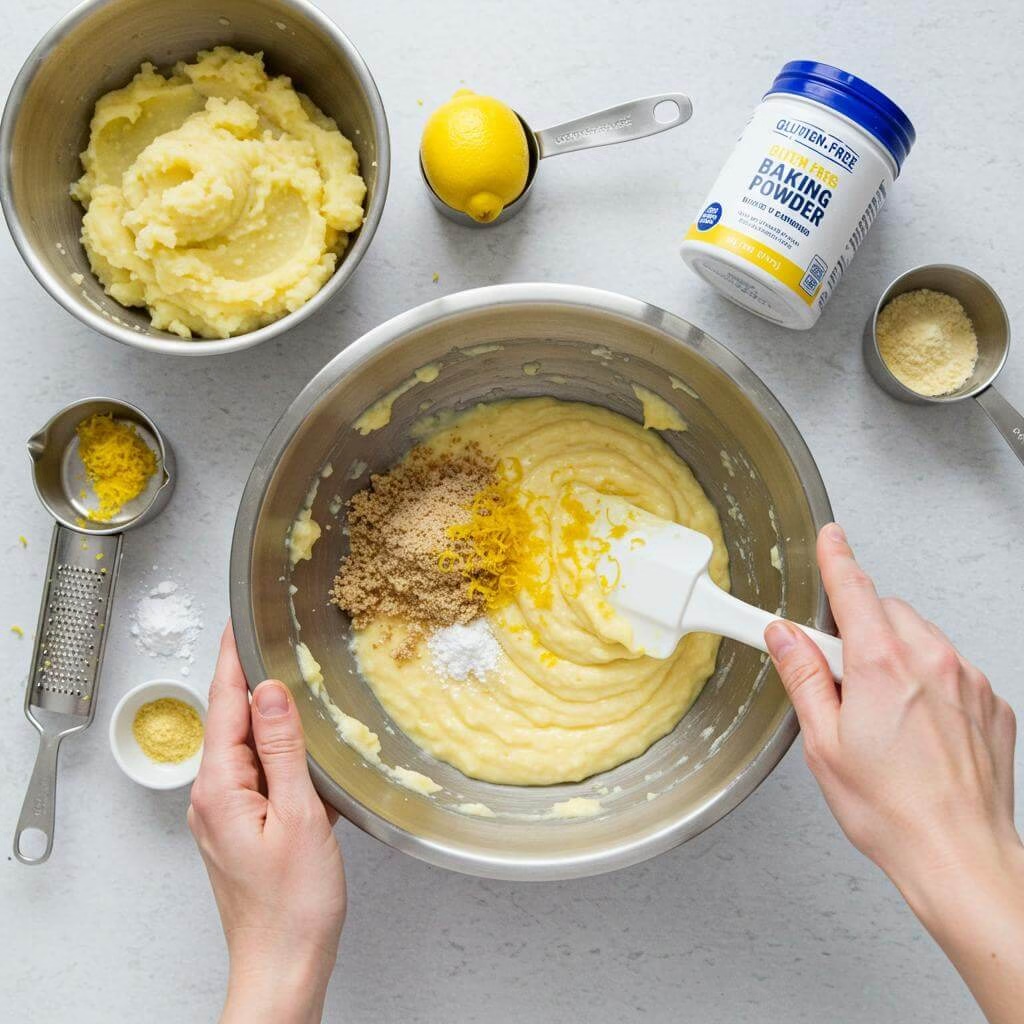
- Start by preparing your oven and cake tin to ensure everything is ready when your batter is mixed. Preheat your oven to 180°C (160°C Fan/Gas Mark 4). Achieving the correct oven temperature is crucial for even baking, especially for a gluten-free potato almond cake, so using an oven thermometer is a great idea to ensure accuracy. Next, prepare a deep, 20cm round cake tin. Generously butter the inside surfaces, then line the base and sides with baking parchment. Proper greasing and lining prevent the delicate gluten-free cake from sticking, ensuring a clean release after baking. In a large mixing bowl, combine the granulated sugar and softened butter. Using an electric mixer (either a stand mixer or hand mixer), beat the mixture together for several minutes until it’s wonderfully light and fluffy and pale in color. This creaming process incorporates air, which is vital for the texture of this potato almond cake. Now, crack your eggs into a separate bowl and lightly whisk them. Gradually add the whisked egg to the butter and sugar mixture, a little at a time, beating well after each addition until fully combined before adding more. Adding the egg slowly helps prevent the mixture from curdling. Once the wet ingredients are thoroughly mixed, it’s time to gently incorporate the dry elements: the ground almonds, the completely cold, smooth mashed potato (lumps are the enemy here – a potato ricer can work wonders for achieving a fine texture), the vibrant lemon zest, and the gluten-free baking powder. Using a spatula or large metal spoon, gently fold these ingredients into the batter until just combined. Be careful not to overmix, as this can lead to a tough or crumbly texture in gluten-free cakes like this potato almond cake.
- Carefully transfer the prepared gluten-free potato almond cake batter into your lined 20cm cake tin. Use a spatula to ensure you get every last bit and then gently spread the top to create an even layer. A level top promotes uniform baking and a beautiful finish for your potato almond cake. Place the tin in the preheated oven and bake for approximately 40 to 45 minutes. Baking times can vary depending on your oven, so start checking around the 40-minute mark. The cake is ready when it is a lovely golden brown color on top and feels springy to the touch. To be sure, insert a skewer or thin knife into the very center of the cake; it should come out completely clean with no wet batter attached. If it doesn’t, give it a few more minutes and test again. Once baked, remove the cake from the oven and let it cool in the tin for about 10 minutes. This brief cooling period in the tin helps the cake firm up before you handle it. After 10 minutes, carefully turn the cake out onto a wire cooling rack to cool completely. While the cake is still slightly warm, prepare the simple lemon glaze. In a small bowl, whisk together the granulated sugar and fresh lemon juice until the sugar is mostly dissolved. Grab a spoon and generously drizzle or spoon this glaze all over the top surface of the cake, allowing it to naturally drip down the sides. The warmth of the cake will help the glaze set into a lovely, slightly crisp coating. Finally, and this is important for the best texture and structure of your potato almond cake, allow it to cool completely on the wire rack before attempting to slice and serve it. Slicing too early can cause it to crumble.
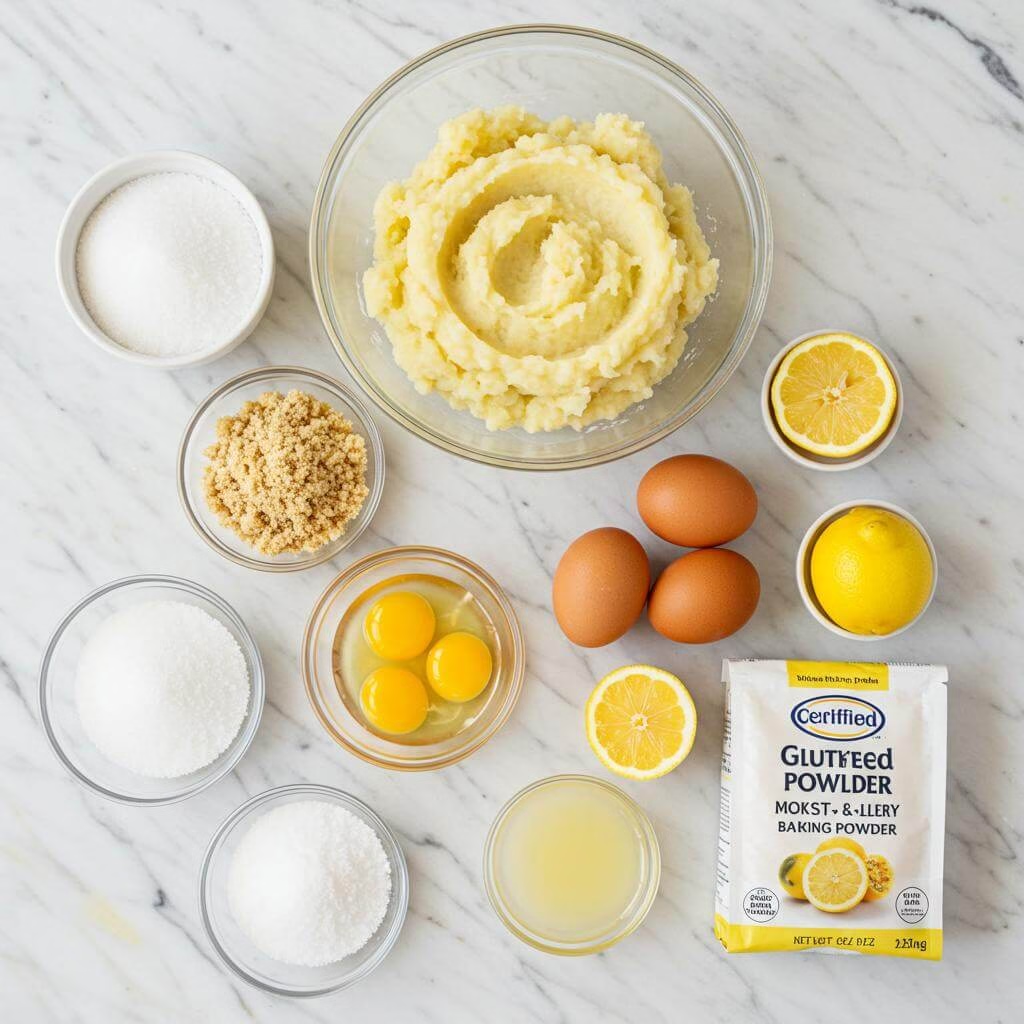
Tips for Perfect Gluten-Free Potato Almond Cake
Achieving a beautifully moist and tender gluten-free potato almond cake is absolutely within reach! While this recipe is wonderfully straightforward, a few key techniques can make all the difference, especially when working without gluten. Here are our expert tips to help you bake the very best potato almond cake you’ve ever made:
- Ensure your mashed potato is completely cold and dry: The recipe specifies cold mashed potato, and aiming for a somewhat ‘dry’ mash (not watery or overly creamy) is crucial. Excess moisture can lead to a gummy texture in gluten-free baking. Mashing or ricing the potato while still warm, then letting it cool completely and uncovered in the fridge, helps some steam escape before adding it to the batter. This is one of the secrets to a delightful potato almond cake consistency.
- Use finely ground blanched almond flour: Not almond meal. Blanched almond flour (where the skins are removed before grinding) provides a finer, lighter texture. The quality of your ground almonds directly impacts the final crumb of your potato almond cake. Keep almond flour in the fridge or freezer to maintain freshness.
- Room temperature butter and eggs are your friends: Ensure both your butter (softened but not melted) and eggs are at room temperature. This allows them to emulsify properly, creating a smooth, well-aerated batter during the creaming stage, which is essential for a good lift in your potato almond cake.
- Cream butter and sugar thoroughly: Beat the butter and sugar until genuinely light and fluffy. This process incorporates air, contributing significantly to the rise and texture of your gluten-free potato almond cake. Don’t rush this step!
- Add eggs one at a time, beating well after each: This helps prevent the batter from curdling and ensures the eggs are fully incorporated, adding structure and richness to the gluten-free potato almond cake mix.
- Fold gently, don’t beat, once the potato and almonds are added: Overmixing gluten-free batters can lead to a tough or dense result. Once you add the ground almonds, cold mashed potato, lemon zest, and baking powder, fold them in gently using a spatula until just combined. You’re suspending the potato and almonds in the batter, not developing gluten (which isn’t there anyway!).
- Check oven temperature with an oven thermometer: Gluten-free baking is sensitive to temperature. Ensuring your oven runs true to temperature prevents issues like over-browning before the inside is cooked (or undercooking leaving it wet). A perfectly baked potato almond cake relies on consistent heat.
- Bake until truly done: Rely on the skewer test. The skewer should come out clean, perhaps with a few moist crumbs attached, but no wet batter. Undercooking is a common pitfall and can result in a gummy centre in a gluten-free potato almond cake.
- Cool for exactly 10 minutes in the tin: This step is crucial for the cake’s structure to set slightly before the stress of turning it out. Turning it out too soon can cause it to break. After 10 minutes, transfer it to a wire rack to cool completely.
- Apply the glaze while the cake is warm but not hot: The recipe suggests glazing after turning out. Applying the glaze while the cake is still warm allows it to soak in slightly, adding moisture and flavour. If it’s too hot, it might melt and run off completely; if too cold, it won’t absorb at all.
Common Mistakes to Avoid When Baking Potato Almond Cake (Gluten-Free)
Even with the best intentions, certain missteps can impact your gluten-free potato almond cake. Here are a few to watch out for:
- Using hot or lumpy mashed potato: As mentioned, hot potato adds unwanted moisture and heat to the batter, which can affect the delicate balance of a gluten-free mix. Lumps will remain lumps in the finished cake! Always use cold, finely mashed (or ideally, riced) potato for the smoothest, most consistent texture in your potato almond cake.
- Over-mixing the batter: While you need to cream the butter and sugar well, once the main dry components (almonds, baking powder) and the potato are added, stop mixing as soon as everything is just combined. Overworking the batter can lead to a dense, heavy potato almond cake, which is a common issue in gluten-free baking that lacks the elastic structure of gluten.
- Not allowing the cake to cool sufficiently before slicing: Gluten-free cakes continue to set and firm up as they cool. Slicing into a warm potato almond cake can result in a crumbly mess and a less defined texture. Be patient and let your beautiful potato almond cake cool completely on a wire rack before reaching for the knife.
Frequently Asked Questions
Why put potato in a cake recipe anyway?
It might sound a little unusual at first, but the mashed potato is actually the brilliant secret weapon in this potato almond cake! It’s not just filler; it’s truly a miracle worker for gluten-free baking. The cooked, mashed potato infuses the cake with incredible, long-lasting moistness and helps create that wonderfully delicate, soft crumb that we all look for in a perfect cake. It adds structure without relying on gluten, resulting in a tender texture that stays delightful.
What’s the best way to prepare the mashed potato for this cake?
Getting the right texture for your mashed potato is key! You want it to be completely smooth and free of any lumps – lumps are definitely the enemy here. For the absolute finest texture, using a potato ricer is highly recommended if you have one. It gives a fantastically light and fine result. Most importantly, make sure the mashed potato is completely *cold* before you fold it into the batter. Using cold mashed potato is crucial for the consistency and success of this potato almond cake.
Can someone with a nut allergy still enjoy this beautiful potato almond cake?
Yes, absolutely! We want everyone to enjoy a delicious slice. If you need to make this potato almond cake nut-free (as well as wheat-free), you can easily switch out the ground almonds. The recipe suggests substituting them with an equal weight of fine polenta or a good quality gluten-free all-purpose flour blend. Keep in mind that the texture might be slightly different depending on your substitution – polenta can give a slightly grainier crumb, while a flour blend will be closer to a traditional cake texture – but both alternatives work wonderfully to create a lovely dessert.
I need this to be dairy-free or egg-free. Are there substitutions that work for this potato almond cake?
Good news! This potato almond cake recipe is quite adaptable for other dietary needs. For a dairy-free version, you can easily swap the butter for a dairy-free butter alternative or solid coconut oil that is suitable for baking. To make it egg-free, you can try using a ‘flax egg’ (which is 1 tablespoon of ground flaxseed mixed with 3 tablespoons of water, left to sit for about 5 minutes per egg needed) or a commercial egg replacer. Just be aware that using an egg substitute might result in a slightly denser texture for the final cake.
Why do I need to wait for the potato almond cake to cool completely before slicing?
We know it’s tempting to dive straight in, especially with something as delicious as this potato almond cake! However, allowing the cake to cool completely on the wire rack is a really important step for achieving the best texture and structure. When the cake is still warm, it’s much more delicate. Letting it cool helps it to firm up properly. If you try to slice it too early, it might crumble or fall apart, giving you less-than-perfect slices. Patience will be rewarded with a beautifully structured cake that holds together nicely!
What are the key things to do to get the best, moist texture for this cake?
Achieving that perfect moist and tender texture in this potato almond cake relies on a few key steps highlighted in the recipe. First, ensure your mashed potato is completely smooth and cold – using a potato ricer (as mentioned in the tips) is fantastic for this. Second, when you fold in the ground almonds, mashed potato, and baking powder, be very gentle and avoid overmixing. Overmixing can develop toughness or a crumbly texture in gluten-free bakes. Creaming your butter and sugar until light and fluffy also helps incorporate air for a lighter crumb.
How can I tell if my potato almond cake is baked through and ready?
The recipe gives a baking time range of 40 to 45 minutes, but ovens can vary, so it’s always best to test for doneness. Your potato almond cake should be a lovely golden brown color on top and feel springy when you gently touch it. The most reliable test is to insert a skewer or a thin knife right into the very center of the cake. If it comes out completely clean with no wet batter attached, your cake is ready! If you see any wet batter, just pop it back in for a few more minutes and test again.

